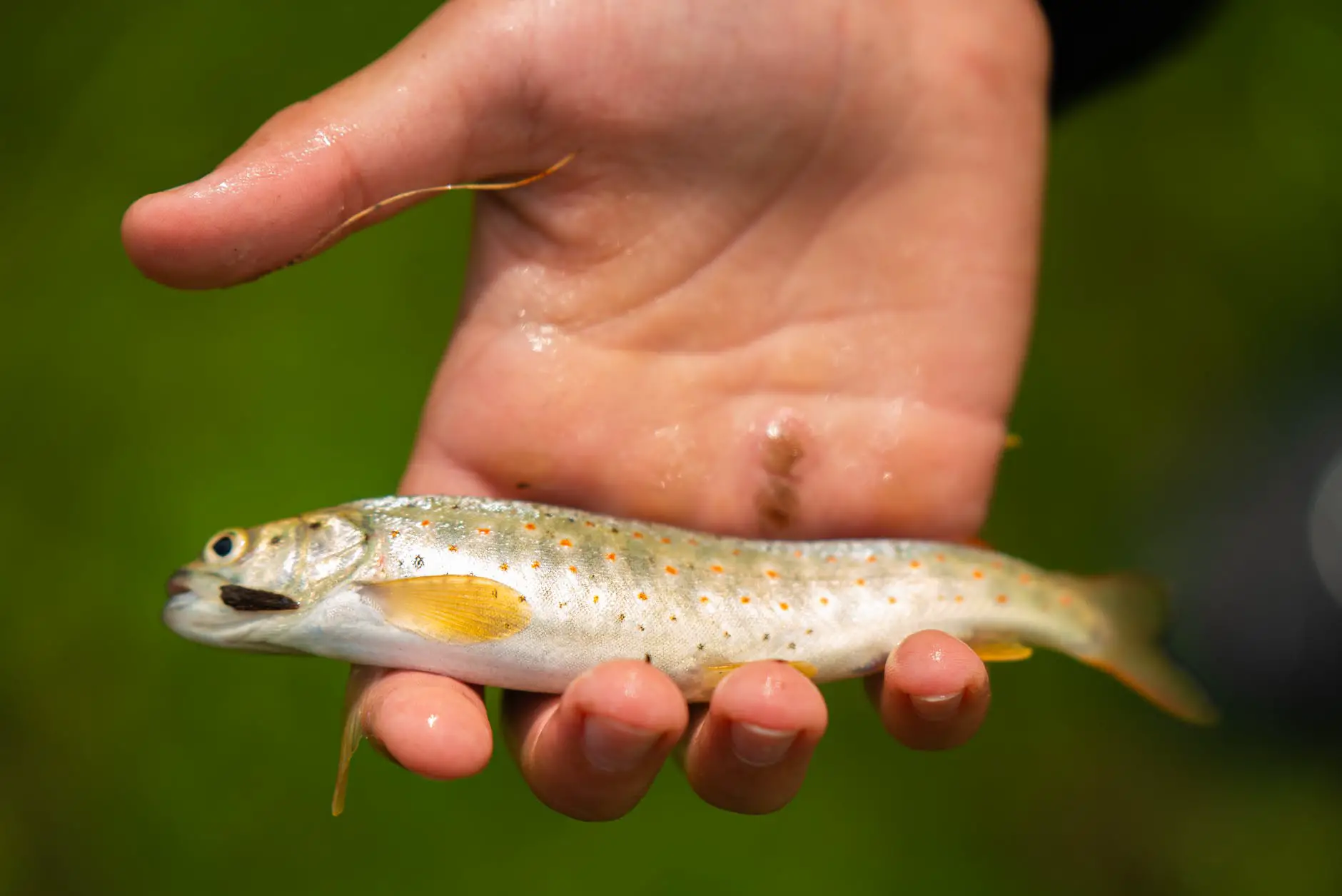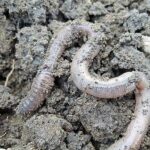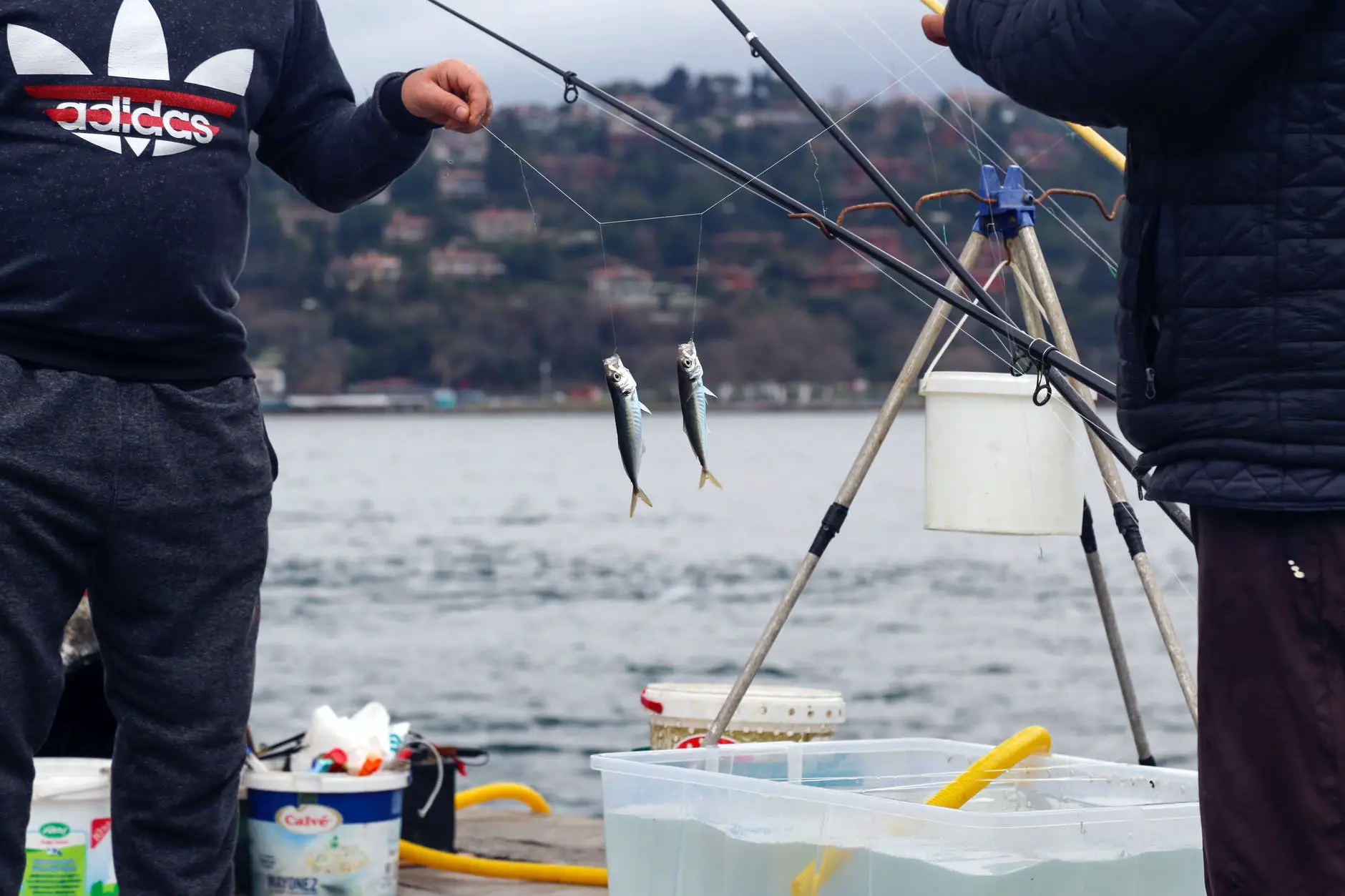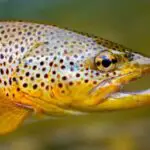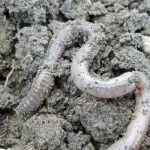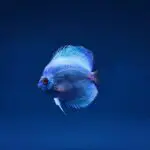There’s no question that crappie will eat a juicy, wiggling worm if it’s presented to them. But when it comes to fishing for crappie, minnows are simply the best live bait option – they’re just more irresistible to these big fish. Worms have their place, but they’ll never beat out minnows when it comes to catching crappie.
1. What is a crappie?
A crappie is a tasty, fun to catch freshwater game fish who are a part of the sunfish family. Crappies have other names such as speckled bass, calico bass, papermouth, sauc-au-lait, and strawberry bass. They are native to the eastern United States and Canada but can be found almost anywhere in America today.
Crappies are relatively small fish, with adults typically reaching 10-12 inches in length and weighing 1-2 pounds. However, they can grow larger than this; the world record crappie was 19 inches long and weighed 5 pounds 3 ounces!
Crappies are popular with anglers because they put up a good fight when hooked, and they taste great too! They can be caught using a variety of methods including live bait fishing, jigging, and trolling.
2. What do crappies eat?
As they mature and reach adulthood, crappies still consume insects and aquatic shrimp, tadpoles, and crayfish but their diet evolves to feeding mostly on baitfish. Crappie readily consume small bluegills, small yellow perch, small bass, along with shiners, suckers, small shad, and minnows.
Insects are an important part of the diet of juvenile crappies; however, as they grow older their diets begin to change. By the time they reach adulthood, most crappies are opportunistic predators that feed primarily on baitfish. Smaller species of fish such as bluegills, yellow perch and bass make up a large portion of their diet but they will also eat shiners sucker fish ,small shad ,and minnows when available.Juvenile and adult crappies alike will also consume aquatic insects ,shrimp ,tadpoles ,and crayfish when the opportunity arises.
3. Do crappies eat nightcrawlers?
While it is possible to catch crappie using worms and nightcrawlers as bait, they much prefer other live options such as minnows, shiners, suckers, and yellow perch. This is likely because these other baits more closely resemble the small fish that make up the majority of their diet. Crappies are opportunistic feeders and will generally eat whatever type of bait is presented to them, but if given the choice they will undoubtedly go for something that better resembles their natural prey items.
4. How often do crappies eat nightcrawlers?
If you’re interested in fishing for crappies, you might be wondering how often they eat nightcrawlers. The answer to this question depends on a few factors, including the time of year and the water conditions.
In general, crappies will feed more heavily at night during the summer months when the water is warmer. They’ll also feed more heavily during periods of high water clarity, since they can see their prey more easily. However, this isn’t always the case – sometimes crappies will feed throughout the day if there’s enough food available.
As for bait, live nightcrawlers are always a good option when fishing for crappies. They’re relatively easy to find and catch, and crappies seem to love them! If you can’t find any live worms, artificial lures that mimic small fish or insects can also work well.
So, how often do crappies eat nightcrawlers? It really varies depending on the conditions, but in general they’ll feeding most actively at night during the summer months when the water is warm and clear. Live worms are always a great bait option, but artificial lures can also be effective.
5. Why do some people say that you should not use nightcrawlers as bait for crappies?
Some people say that you should not use nightcrawlers as bait for crappies, because they are too large and the crappies will not be able to eat them. Others say that nightcrawlers are a good bait choice because they are easy to find and store, and they stay on the hook well. Ultimately, it is up to the angler to decide what bait to use based on their personal preferences and experiences.
6. Are there any other baits that work well for catching crappies?
Minnows, worms, insects – just about anything can catch a crappie’s attention. You don’t have to worry about the color of the bait, and you’re only throwing them what they would be eating anyway. Minnows are hands-down the favorite used by most, and some even tip a jig with a live minnow for a double-whammy.
7. How can I tell if a crappie is biting my bait?
The best way to tell if a crappie is biting your bait is to pay attention to the line. If you feel a light tap or see the line moving, then there’s a good chance that a crappie has taken the bait. Another way to tell is by watching for movement in the water near your bait. Crappies are attracted to movement, so if you see any suspicious activity, it’s likely that one of these fish is responsible. Finally, if you’re using live bait, such as minnows, you may be able to see the crappie swimming around your hook.
8. What are some tips for fishing for Crappies at night?
There are a few things to keep in mind when fishing for Crappies at night. First, minnows are still the best bait to use. You can also try using worms or insects. Second, make sure you have plenty of light so you can see what you’re doing. Third, be patient and don’t get discouraged if you don’t catch anything right away. fourth, pay attention to your line and watch for any bites or movement. Fifth, once you hook a Crappie, be careful not to let it get away.
9. When is the best time to go fishing for Crappies?
There are a few different things to consider when trying to determine the best time to go fishing for crappies. The first is the temperature. Warmer months will generally produce better results than colder months, with nighttime being especially effective during warmer months. This is because crappies are cold-blooded creatures and their metabolism slows down in cooler temperatures. They will therefore be more active and easier to catch when it is warm out.
The second thing to consider is the time of day. Just after sunrise and an hour before sunset are generally considered the best times for crappie fishing during warmer months. This is because these times offer the perfect balance of light and temperature for crappies to be most active. However, during colder months, midday can also be a good time to fish for crappies, as this is when the air temperature is at its warmest.
So, taking all of this into account, the best time to go fishing for crappies will vary depending on the month and weather conditions. In general, though, you should aim for either just after sunrise or an hour before sunset during warmer months, or midday during colder months.
10. Where can I find Crappies in my area
Crappies are a popular game fish that can be found in many lakes and rivers across North America. They are typically quite easy to catch, making them a great choice for anglers of all levels of experience.
So where can you find crappies in your area? The best bet is to look for them in areas with plenty of vegetation, as they love to hide among the plants. Another good option is to check around sunken logs or other submerged structure, as crappies will often congregate there. In general, anywhere with plenty of cover is likely to hold some Crappies.
If you’re having trouble finding Crappies in your usual fishing spots, try moving to deeper water. Crappies tend to move into deeper waters as the weather gets warmer, so they may not be where you normally expect to find them at this time of year.
No matter where you’re looking for Crappies, remember that patience is key; though they are relatively easy to catch, it may take a little while before you start reeling them in.
